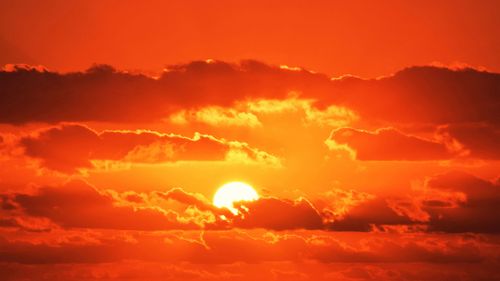<div class="block-content"><div class="styles__Container-sc-1ylecsg-0 goULFa"><span>Just over a third of Aussies are wearing sunscreen most days, despite more than half of us spending more than 15 minutes outside in peak UV hours, according to data analysed by health insurer iSelect.</span></div></div><div class="block-content"><div class="styles__Container-sc-1ylecsg-0 goULFa"><span>The Australian Bureau of Statistics data showed just more than half of Australians (54.3 per cent) use three or more measures to protect their skin.</span></div></div><div class="block-content"><div class="styles__Container-sc-1ylecsg-0 goULFa"><span>These most commonly include wearing sunglasses, protective clothing, a hat or staying in the shade, but just 38.3 per cent of Australians wear SPF 30+ most days.</span></div></div><div><div id="adspot-mobile-medium"></div></div><div class="block-content"><div class="styles__Container-sc-1ylecsg-0 goULFa"><strong><span>READ MORE:</span></strong><span> </span><a href="https://www.9news.com.au/national/optus-triple-zero-outage-senate-inquiry-stephen-rue/542c15b4-fd40-4a19-8bb6-95d46984299b" target="_blank"><strong><span>Optus bosses admit failures in triple-zero outage that left three dead</span></strong></a></div></div><div class="block-content"><div class="styles__Container-sc-1ylecsg-0 goULFa"><span>The Cancer Council recommends using sunscreen every day on days when the UV Index is forecast to be 3 or above, in addition to wearing protective clothing, a broad-brim hat, sunglasses and seeking shade when possible.</span></div></div><div class="block-content"><div class="styles__Container-sc-1ylecsg-0 goULFa"><span>iSelect general manager Andres Gutierrez said regular sunscreen use was alarmingly low.</span></div></div><div class="block-content"><div class="styles__Container-sc-1ylecsg-0 goULFa"><span>"Consistent and effective sunscreen use is low, highlighting a key gap in everyday sun protection habits that could increase the risk of skin damage and skin cancer," Gutierrez said.</span></div></div><div><div class="OUTBRAIN" data-reactroot="" data-src="//www.9news.com.au/national/sun-safety-australia-only-a-third-of-aussies-are-wearing-sunscreen-every-day-health-news/fd713fc0-ef2e-45f1-ba79-5f07b66362ac" data-widget-id="AR_5"></div></div><div class="block-content"><div class="styles__Container-sc-1ylecsg-0 goULFa"><span>He said </span><a href="https://www.9news.com.au/national/sunscreens-recalled-australia-full-list-what-to-do-explained/7c00cef4-6d98-425b-9e0b-47f0d6915d60" rel="" target="" title="recent sunscreen recalls"><span>recent sunscreen recalls</span></a><span> could potentially cause Australians to question their efficacy.</span></div></div><div class="block-content"><div class="styles__Container-sc-1ylecsg-0 goULFa"><span>"There is no doubt that the recent sunscreen recalls have impacted consumer trust and confidence in product safety, leading many Australians to question and be more cautious about which sunscreen they choose and how consistently they use them," Gutierrez said.</span></div></div><div class="block-content"><div class="styles__Container-sc-1ylecsg-0 goULFa"><span>"Without strong confidence in sunscreen efficacy and safety, we risk undermining the protective behaviours that are key in reducing sun damage and skin cancer risk."</span></div></div><div class="block-content"><div class="styles__Container-sc-1ylecsg-0 goULFa"><span>The data found more than half (61.2 per cent) of Aussies are outside for more than 15 minutes during peak UV hours, adding up to more than two days each week and 9.4 per cent of us still reported deliberately trying to get a sun tan.</span></div></div><div class="block-content"><div class="styles__Container-sc-1ylecsg-0 goULFa"><span>"This is extremely concerning as intentional sun exposure significantly increases the risk of long-term skin damage," Guiterrez said.</span></div></div><div class="block-content"><div class="styles__Container-sc-1ylecsg-0 goULFa"><span>"The study also revealed that nearly seven per cent of Australians had also experienced a sunburn."</span></div></div><div class="block-content"><div class="styles__Container-sc-1ylecsg-0 goULFa"><span>iSelect analysed the ABS data to see which regions are the most sun-safe overall.</span></div></div><div class="block-content"><div class="styles__Container-sc-1ylecsg-0 goULFa"><span>It found the Australian Capital Territory had the best sun-safe behaviour, despite having only moderate to high levels of UV and average sunshine hours.</span></div></div><div class="block-content"><div class="styles__Container-sc-1ylecsg-0 goULFa"><span>The ACT was followed by the Greater Darwin region and the Greater Brisbane region, where residents were more likely to be aware of the extreme UV risk.</span></div></div><div class="block-content"><div class="styles__Container-sc-1ylecsg-0 goULFa"><span>Sun safety was worst in Tasmania, where the UV risk is lower.</span></div></div><div class="block-content"><div class="styles__Container-sc-1ylecsg-0 goULFa"><strong><em><span>Stay across all the latest in breaking news, sport, politics and the weather via our news app and get notifications sent straight to your smartphone. Available on the</span></em></strong><span> </span><a href="https://apps.apple.com/au/app/9news/id1010533727" target="_blank"><strong><em><span>Apple App Store</span></em></strong></a><span> </span><strong><em><span>and</span></em></strong><span> </span><a href="https://play.google.com/store/apps/details?id=nineNewsAlerts.nine.com&hl=en_AU&pli=1" target="_blank"><strong><em><span>Google Play</span></em></strong></a><strong><em><span>.</span></em></strong></div></div>
Only third of Aussies are wearing sunscreen most days, in line with guidelines

Leave A Reply
Your email address will not be published.*